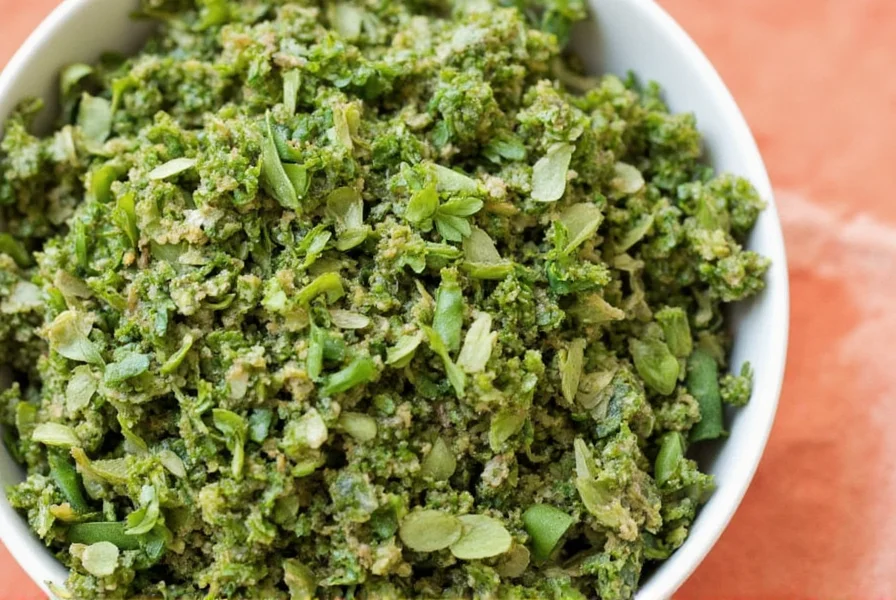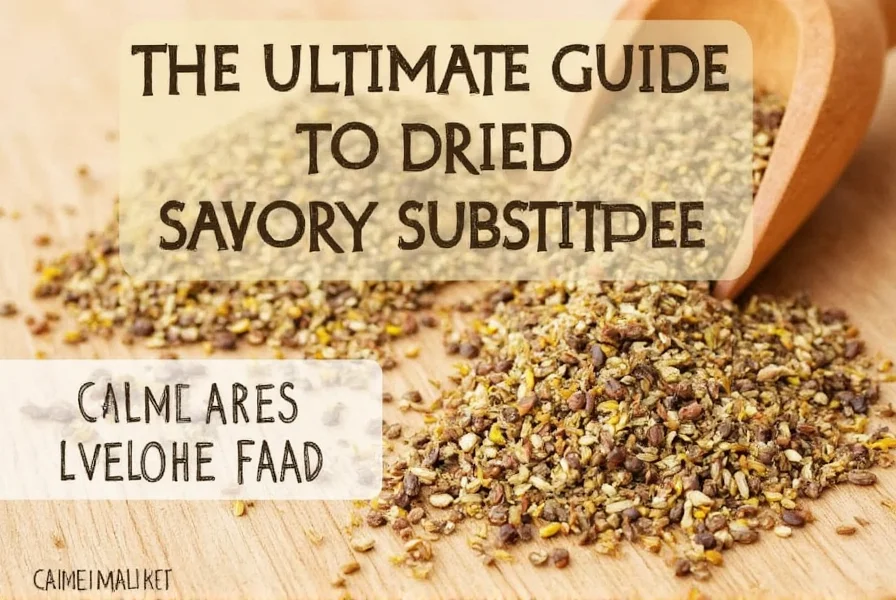If you're passionate about food and flavor, understanding the difference between herbs and spices is essential for elevating your cooking. Many confuse these terms, but they come from distinct parts of plants and require different handling to maximize flavor.
In this guide, we'll clarify the key differences, highlight the top 5 must-have herbs and spices for every kitchen, and share expert storage and cooking techniques to make every dish unforgettable.
Table of Contents
- Herbs vs Spices: Key Differences
- Top 5 Must-Have Herbs and Spices
- Buying Guide: How to Choose Quality Herbs and Spices
- Storage Tips: Keeping Herbs and Spices Fresh
- Pro Cooking Hacks Using Herbs and Spices
- Frequently Asked Questions
- Conclusion: Transform Your Cooking with Flavor
Herbs vs Spices: Key Differences
Understanding the distinction between herbs and spices is foundational for proper usage:
- Herbs come from the leafy green parts of plants (e.g., basil, parsley, thyme, oregano, cilantro).
- Spices derive from dried seeds, roots, bark, or fruits (e.g., cinnamon, black pepper, cumin, paprika).
| Category | Examples | Common Uses |
|---|---|---|
| Herbs | Basil, Parsley, Thyme, Oregano, Cilantro | Fresh dishes, finishing touches, Mediterranean cuisine |
| Spices | Cinnamon, Turmeric, Paprika, Cumin, Black Pepper | Stews, baked goods, rubs, curry blends |

Top 5 Must-Have Herbs and Spices
These 5 versatile ingredients form the backbone of global cuisines. Start with these to build flavor confidence:
- Basil – Essential for Italian dishes. Use fresh for pesto, caprese salads, or tomato sauces.
- Oregano – The heart of Mediterranean cooking. Dried oregano enhances pizza, pasta, and roasted vegetables.
- Cumin – Key for Mexican, Indian, and Middle Eastern recipes. Adds earthy warmth to chili, tacos, and curries.
- Paprika – Provides vibrant color and mild sweetness. Perfect for goulash, roasted potatoes, or smoked eggplant dips.
- Black Pepper – The most universal spice. Freshly ground pepper elevates every savory dish from steaks to soups.
Pro Tip: Fresh vs Dried Usage
- Herbs:
- Fresh (basil, cilantro): Add at the end of cooking to preserve delicate flavors and color.
- Dried (oregano, thyme): Add early to allow oils to infuse during simmering or roasting.
- Spices:
- Most are used dried. Toast whole spices (like cumin seeds) before grinding for maximum aroma.
- Add ground spices early in cooking to release their full flavor potential.

Buying Guide: How to Choose Quality Herbs and Spices
Quality matters for flavor intensity and shelf life. Here’s what to look for:
What to Look For When Buying
| Type | Appearance | Smell/Taste | Best Brands |
|---|---|---|---|
| Fresh Herbs | Vibrant green color, firm stems, no wilting | Strong, clean aroma when crushed | Farmer's Market, Sprouts, Whole Foods |
| Dried Herbs | Leaves intact, no powdery residue | Intense fragrance when rubbed between fingers | McCormick, Simply Organic, Frontier Co-op |
| Whole Spices | Uniform size, no cracks or discoloration | Pungent aroma (e.g., cumin seeds smell earthy) | Penzeys, Spicewalla, local spice shops |
| Ground Spices | Uniform color, no clumping | Strong scent when sniffed; fades quickly if old | McCormick, Spice Islands, Rani |
Key Questions to Ask
- Is this for immediate use or long-term storage? (Buy fresh herbs weekly, dried spices in small quantities)
- Do I need whole or ground? (Whole spices retain flavor longer; grind fresh as needed)
- How often will I use it? (Prioritize versatility: e.g., black pepper over niche spices)
Who Should Buy What?
- Beginners: Start with basil, oregano, cumin, paprika, and black pepper. These cover 80% of everyday recipes.
- Foodies: Explore specialty options like smoked paprika, za'atar, or fresh lemongrass.
- Professional Chefs: Invest in single-origin spices and organic fresh herbs for nuanced flavors.

Storage Tips: Keeping Herbs and Spices Fresh
Storing Fresh Herbs
- Place stems in water like a bouquet; cover loosely with plastic and refrigerate.
- For delicate herbs (basil, cilantro), store at room temperature away from sunlight.
- Freeze chopped herbs in olive oil for sauces and soups.
Storing Dried Herbs and Spices
- Keep in airtight glass jars away from heat, light, and moisture (e.g., pantry, not above stove).
- Label containers with purchase dates. Replace dried herbs every 6-12 months; ground spices every 1-2 years.
- Test freshness: Crush a pinch. If aroma is weak or flavor bland, replace immediately.
Pro Cooking Hacks Using Herbs and Spices
Hack #1: Infused Oils
Simmer rosemary, thyme, or garlic in olive oil for 5 minutes. Strain and drizzle over grilled vegetables, bread, or pasta.
Hack #2: Compound Butter
Mix softened butter with chopped parsley, chives, or smoked paprika. Freeze in logs for quick steak or corn toppings.
Hack #3: Herb Salts
Blend coarse sea salt with dried rosemary or thyme. Use as a finishing salt for roasted potatoes or grilled meats.
Hack #4: Spice Blends
Combine cumin, paprika, garlic powder, and oregano for instant taco seasoning. Store in airtight container for 3 months.
Hack #5: Toasting Spices
Heat whole cumin or coriander seeds in a dry pan for 1-2 minutes until fragrant. Grind for deeper flavor in curries or rice dishes.
Frequently Asked Questions
What's the difference between herbs and spices?
Herbs come from the leafy green parts of plants (e.g., basil, parsley), while spices derive from dried seeds, roots, bark, or fruits (e.g., cinnamon, black pepper). This distinction affects how you use them: fresh herbs are delicate and added at the end of cooking, while spices are typically dried and added earlier to release flavors.
How long do dried herbs and spices last?
Dried herbs retain peak flavor for 6-12 months; ground spices last 1-2 years. Whole spices (like cinnamon sticks) can stay potent for 2-3 years. Always test by crushing a pinch—if aroma is weak or flavor bland, replace it. Store properly in airtight containers away from heat and light to maximize shelf life.
Can I substitute fresh herbs for dried (and vice versa)?
Yes, but adjust quantities: use 1 part dried herbs for every 3 parts fresh. Add fresh herbs at the end of cooking to preserve flavor; add dried herbs early to allow infusion. Note: Some herbs don't substitute well—basil is best fresh, while oregano often tastes better dried. Spices are typically used dried; fresh versions (like ginger) are rare and require different preparation.
What are the most versatile herbs and spices for beginners?
Start with these 5 essentials: basil (Italian dishes), oregano (Mediterranean), cumin (Mexican/Indian), paprika (color and sweetness), and black pepper (universal savory use). These cover most everyday recipes and can be used in countless combinations. Avoid niche spices until you master these fundamentals.
How can I tell if my herbs or spices have gone bad?
Fresh herbs: Look for sliminess, black spots, or faded color. Dried herbs/spices: Crush a pinch—if aroma is weak or flavor bland, they've lost potency. Ground spices may clump if exposed to moisture, but mold is rare. Always store in airtight containers away from heat and light to prevent spoilage.
Are organic herbs and spices worth the extra cost?
Organic options are valuable for frequently used items like black pepper or basil, as they reduce pesticide exposure in concentrated plant matter. For occasional-use spices (e.g., saffron), conventional is sufficient. Prioritize organic for herbs you eat fresh (like cilantro) where residues are more likely to remain. Always check certifications like USDA Organic for reliability.
What's the best way to grow my own herbs at home?
Start with hardy herbs like basil, oregano, or thyme in pots with 6+ hours of sunlight. Use well-draining soil and water when the top inch feels dry. Pinch off top leaves to encourage bushy growth. For spices like cumin, grow the plant (Coriandrum sativum), then harvest seeds when they turn brown. Harvest herbs in the morning for maximum oil content.
Conclusion: Transform Your Cooking with Flavor
Mastering herbs and spices transforms simple ingredients into extraordinary meals. By understanding their distinct origins and proper usage, you unlock limitless culinary possibilities—from quick weeknight dinners to show-stopping dishes.
Start with the top 5 essentials, store them properly, and experiment with the hacks shared here. Remember: A pinch of fresh basil or a dash of toasted cumin can elevate any dish from ordinary to exceptional.
What's your favorite herb or spice hack? Share your tips in the comments below—we'd love to hear from fellow flavor enthusiasts!










 浙公网安备
33010002000092号
浙公网安备
33010002000092号 浙B2-20120091-4
浙B2-20120091-4